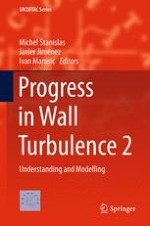2016 | OriginalPaper | Chapter
Structure and Dynamics of Turbulence in Super-Hydrophobic Channel Flow
Authors : Amirreza Rastegari, Rayhaneh Akhavan
Published in: Progress in Wall Turbulence 2
Publisher: Springer International Publishing
Activate our intelligent search to find suitable subject content or patents.
Select sections of text to find matching patents with Artificial Intelligence. powered by
Select sections of text to find additional relevant content using AI-assisted search. powered by
